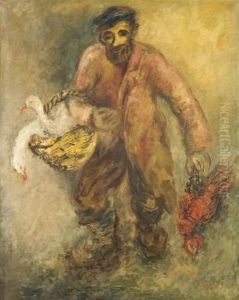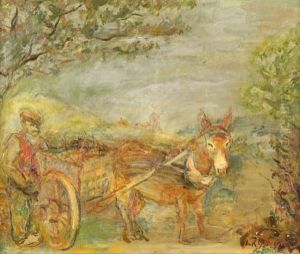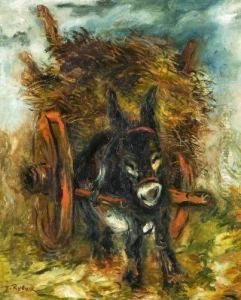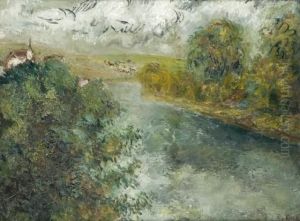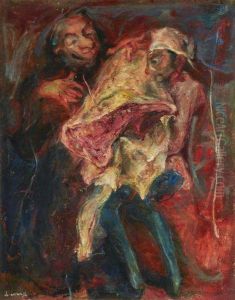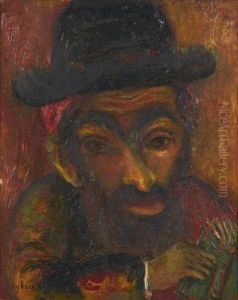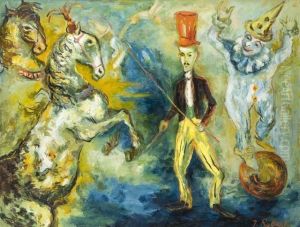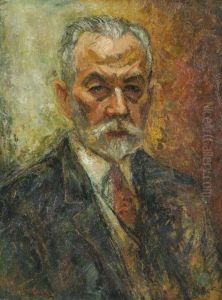Isaac Ryback Paintings
Isaac Ryback, born in 1897 in Yelizavetgrad, Russian Empire (now Kropyvnytskyi, Ukraine), was a pivotal figure in early 20th-century Jewish art, whose work provided a poignant depiction of shtetl life in Eastern Europe. Growing up in a traditional Jewish environment, Ryback was deeply influenced by the rich cultural and religious tapestry of his upbringing. This influence is evident throughout his artistic career, as he sought to capture the essence of Jewish life, tradition, and folklore through his paintings, drawings, and sculptures.
Ryback's journey as an artist began in earnest when he moved to Moscow in the 1910s, where he engaged with the burgeoning avant-garde art scene. He studied at the Moscow School of Painting, Sculpture and Architecture, where he was exposed to a wide array of artistic movements and theories, which he would later incorporate into his unique style. His work from this period reflects a blend of Cubist and Expressionist influences, characterized by vivid colors, dynamic compositions, and a deep emotional resonance.
In the aftermath of the First World War and the Russian Revolution, Ryback's art took on a more focused direction. He became an integral member of the Jewish cultural renaissance movement in the Soviet Union, actively participating in the Kultur-Lige, an organization dedicated to promoting Yiddish language and Jewish culture. During this time, he embarked on a project to document the lives and customs of Jews living in the shtetls of Ukraine, which had been decimated during the war and the subsequent pogroms. His sketches and paintings from this period serve as a vital historical record, capturing the vibrancy and resilience of Jewish shtetl life against a backdrop of destruction and despair.
Tragically, Isaac Ryback's promising career was cut short when he died in 1935 at the age of 38. Despite his early death, Ryback's legacy endures through his influential body of work, which continues to be celebrated for its artistic merit and its profound cultural significance. His portrayal of Jewish life in Eastern Europe provides a valuable window into a world that was soon to be irrevocably changed by the Holocaust. Ryback's art remains a poignant reminder of the richness of Jewish culture and the enduring spirit of its people.
